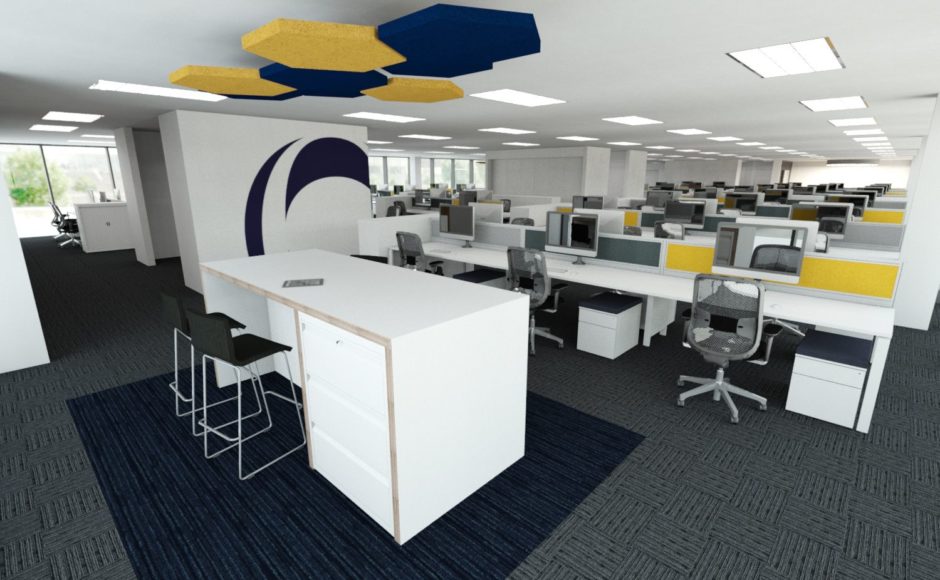The bid to attract and retain Generation Z talent to firms has led to a redesign of office spaces. Unlike past generations, Generation Z is highly tech-savvy, having grown up with much of the modern day tech personal consumer technologies. Additionally, they blend work and play together, often seeking excitement in all that they do. As such, office spaces increasingly feature flexible workstations, collaboration areas, integrated technologies and biophilic design. The effect that these features have on an office is most visible in the production of wide-open spaces that are accompanied with sleek desks and transparent walls.
Also known as human-centric environments, these Generation Z spaces create aesthetically pleasing effects but also an accompanying acoustic problem. With discussions being constantly held in these open areas, all occupants become privy to or distracted by the noise. In fact, research has proven that the average worker loses about ninety minutes a day due to an inability to concentrate on their tasks. It has also being widely reported that a huge chunk of any organization’s operation costs is incurred from a loss of employee efficiency.
In order to retain the desired minimalistic environments, corporate office interior design increasingly incorporates the latest acoustic optimisation technologies. These interior products help to reduce echo and reverberation and thus perform sound management. An example of the latest innovations is that of integrated acoustical ceiling and lighting systems. These systems address both noise issues while also delivering aesthetically pleasing lighting solutions. Rather than sourcing individual components, sourcing and installation is rolled into a singular unified system.
How then can corporate decision makers evaluate what systems could help them to manage noise in the office? Two global certificates are widely recognised in the industry – Leadership in Energy and Environment (LEED) and WELL Building Standard. Both certificates advocate for change to commercial work spaces by promoting the creation of human-centric environments.
WELL focuses on the relationship between building and occupant health & wellness. It argues that acoustic abatement strategies improve occupant health & wellbeing. The certificate encompasses sound concept that includes five features which shapes its users’ experience. Examples include sound absorption, reverberation times and ceiling coverage.
LEED focuses on maximising users’ health and productivity by minimising resources and waste. Four areas that LEED focuses on are masking systems, sound reinforcement, reverberation time, sound transmission and HVAC background noise. Other sub-segments include background noises, sound isolation and speech privacy.
Corporate office interior design is increasingly becoming more sophisticated and integrated, allowing offices to achieve both aesthetically pleasing environments and strong acoustic systems. Now is the time for employers to explore the latest technologies and create environments that improve the wellbeing of their users.


